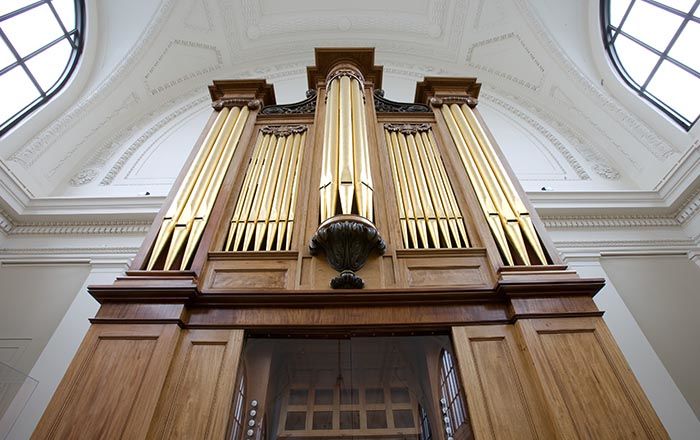Clarinet in C
Clementi & Co. British
Not on view
The composer and pianist Muzio Clementi (born Rome, Italy 23 January 1752, died Evesham/Worcestershire 10 March 1832) established in 1802 a piano manufacture in London. He also sold woodwind instruments (Waterhouse, NLI, 65).
Overall size: 605
Bore: c-hole 13.2; f-hole 13.6.
Technical description: Boxwood with integral wooden ferrules and brass keywork. Six pieces: mouthpiece, barrel, upper section, middle section for the fingers of the right hand, lower section with keys, bell. Long tenon ebony mouthpiece stamped "I. WOOD FECIT" presumably original to the instrument. The stamp is on the reed side of the mouthpiece indicating that it is played with the reed to the upper lip. English-style flask shaped barrel. Speaker, throat A and bascule key mounted in square turned wooden rings. Speaker liner projects almost to the centre of the bore. Levers for L4, tone-hole and key for R4 mounted in a bell-shaped swelling. Zig-zag F♯3/C♯5 lever guided in a rudiment of a turned wooden ring. Bevelled G♯3/E♭5 touchpiece. Bell continous.
L0: T; speaker.
L1: T; throat A♮.
L2: T.
L3: T.
L4: E3/B♮4; F♯3/C♯5.
R1: T.
R2: T.
R3: T.
R4: T; G♯3/E♭5.
Keyhead type: flat square.
Keymount type: turned wooden rings and swelling.
Inscribed on barrel and bell "CLEMENTI & Co. / LONDON" and on upper, middle and lower section "CLEMENTI & Co."
Inscribed on mouthpiece "I. WOOD FECIT". John Wood is a contemporary instrument maker famous for making keys and mouthpieces.
Playing accessories: One reed (modern, cut down) and a string (not original).
(Heike Fricke, 2014)
This image cannot be enlarged, viewed at full screen, or downloaded.
This artwork is meant to be viewed from right to left. Scroll left to view more.
.jpg)

.jpg)
.jpg)
.jpg)
